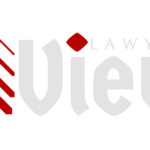Discovering and Managing an Attorney Conflict of Interest
Lawyer conflicts of interest have a bit of bad branding, given the negative denotation of conflict and considering that such conflicts tend to be associated with phrases like being “conflicted out” or “rendering ineffective assistance of counsel.” Would we flinch quite so easily if conflicts of interest were labeled something more neutral, such as client engagement opportunities or client-centered considerations?
It is, of course, easy to feel dread or anxiety about attorney conflicts of interest. Lawyers, after all, tend not to want to experience a malpractice action, or a firing by a client, or a firing by one’s own firm, or a spike in malpractice insurance rates, or professional discipline, or a disqualification motion by an opponent, or a nonpayment situation by a client who discovered a conflict on her own, or a fee challenge, or be subject to a disgorgement.
Despite negative associations, lawyer conflicts of interest need not be entirely bad things. Rules on them were, after all, largely developed to help protect clients. While these rules still exist, so do multiple opportunities for managing conflicts of interest. Lawyers need to identify them and then assess their options for dealing with any given conflict of interest.
What Is a Conflict of Interest?
Although conflicts of interest are addressed in the American Bar Association’s Model Rules of Professional Conduct, the phrase itself is not defined.
Various modifiers are used in the proscriptions against lawyers with conflicts of interest representing various categories of clients. So, for instance, Rule 1.7, which addresses conflicts of interest involving current clients, proscribes lawyers from representing a client if such work involves a concurrent conflict of interest — although the rule includes an exception allowing a lawyer with a conflict of interest to represent a client provided certain prerequisites are met.
Model Rule 1.8 then gets into a bit more detail about what is not allowed, and exceptions specifying what actually is. Another rule (1.9) addresses conflicts involving former clients. Then there’s imputation of conflicts of interest, addressed in Rule 1.10, prohibiting all lawyers in a firm from “knowingly” representing a client if a single one of them would be prohibited by the conflicts rules from representing the client — with more enumerated exceptions that actually allow representation even where there is an imputation of a conflict of interest. Then there are special conflicts of interest, identified in Rule 1.11, addressing scenarios involving current and former government employees. Rule 1.12 addresses situations involving former judges and current law clerks and what they can do and what they cannot as far as clients and matters in which the former judges were or current law clerks are involved. Rule 1.13 concerns lawyers representing organizations as clients. Obligations to prospective clients are addressed in Rule 1.18.
Conflicts of interest do indeed quickly become confusing, especially when a lawyer considers that the model rules are just that — models. A lawyer, of course, should look to professional conduct statutes and rules and ethics opinions and caselaw in jurisdictions in which he is admitted to practice to determine what exactly conflicts of interest are and what is — and is not — allowed.
How Do Conflicts of Interest Arise?
Despite the best efforts of lawyers, conflicts of interest do arise. In many ways, this is only logical: as a young lawyer becomes more experienced and develops an expertise in a certain practice area, more prospective clients will seek out that lawyer for help in his area of expertise. Those prospective clients may indeed have interests adverse to current firm clients or former firm clients. A lawyer representing multiple entities in any given lawsuit might proceed cautiously. Members of a group may have seemingly compatible interests that can quickly diverge. What happens, for instance, if a single lawyer is representing several passengers who were in a car accident against an automobile manufacturer and one passenger wants to settle and others do not? What if the driver is represented as well and the defendant automobile manufacturer raises the driver’s alleged negligence as cause for the accident?
Clients with differing interests aren’t the only means for attorney conflicts of interest to arise. An entrepreneurial lawyer may be developing a business having nothing to do with her legal practice, such as a real estate investment firm or an online vendor. Such a lawyer might start out representing this new business entity as a money-saving measure, but if the lawyer is not a sole proprietor — in short, if she has business partners — her interest and that of her partners may diverge.
Then, too, there are more social scenarios that might give rise to a conflict of interest. What happens if a client is romantically involved with a lawyer? What does the law specify? Depending upon the jurisdiction, there may be a proscription against a lawyer’s sexual relations with a client only in certain circumstances. Then, too, one might engage in a debate on what sexual relations are.
Managing Conflicts of Interest
As complicated as understanding rules on lawyer conflicts of interest are, attorneys might remember that, often, they can proceed to represent a client despite the existence of a conflict of interest provided that certain conditions are met. While representation of clients involving certain conflicts is impermissible, a lawyer might proceed with representation of client involving a permissible conflict of interest provided, typically, that prerequisites are fulfilled. For instance, informed consent by the client may be necessary. Or a firewall (also referred to as a Chinese Wall) may need to be established around a lawyer such that a matter is not discussed within a firm with a certain lawyer who has a conflict of interest. What lawyers really need to think about when thinking about conflicts of interest is how to manage those conflicts, from the point of identifying the potential conflicts to determining whether representation would still be allowed, and under what conditions, to assessing whether such a representation will be pursued or simply declined.
Complications can arise in the managing of conflicts of interest, starting with, of course, the point in a process where a lawyer is when a conflict is discovered. If a conflict is identified during a conflicts check, such a situation might be addressed far differently than when a conflict is discovered by opposing counsel during ongoing litigation. Rules may differ depending on the status of the entity with which the lawyer has a conflict: Is it a current client? a former client? a prospective client? How the conflict was discovered may also have an impact on how, ultimately, it will be handled. Did the lawyer discover the conflict, or did someone else discover it for him? Was this an opponent, a client who is now coming forward with information the lawyer might somehow have overlooked, a judge, or some third party?
Conflicts of interest can become enormously complicated, especially as other elements of a law practice are touched on. For instance, in what situations, if any, can a lawyer with a conflict of interest refer a matter to another lawyer outside the firm and still receive a referral fee?
Whom to approach and how should be given some serious thought when a conflict of interest is identified after representation has begun. Again, some conflicts are managed easily, with a simple declination of a representation or the obtaining of informed consent from appropriate parties. Others are not so easily resolved and could require notice to a malpractice insurer or the taking of other actions to withdraw or compel withdrawal, from a matter.
Practical Concerns
A lawyer facing a potential conflict of interest might also consider what his own position is within a firm, whether he is an associate, or a partner, or of counsel. Such a lawyer might consider how she is going to protect her client, her firm, and herself in addressing the conflict of interest. Consideration should be given to how aggressively to interpret applicable rules, and the repercussions that may result should one’s interpretation ultimately not mesh with a court’s. Certain law practices may give rise to more frequent assertions of conflicts of interest, even where no such conflicts actually exist. For instance, prisoners subjected to lengthy sentences might be eager to assert a post-plea or post-conviction conflict of interest involving their lawyer that might persuade an appeals court to conclude that there was ineffective assistance of counsel.
In the ideal scenario (other than the one involving no conflicts whatsoever), potential conflicts are identified prior to representation and then managed appropriately. The less-than-ideal scenario may involve a mistake, or bad judgment, or disgruntled clients not so acquiescent about their lawyer acting in some way averse to their interests, and disqualification motions and disciplinary actions and nonpayment and fee disputes and malpractice claims.
With lawyer mobility and revolving doors moving lawyers into and out of government service and law firm mergers and law firm breakups and sales of practices and lawyer specialization, conflicts of interest cannot be easily avoided. Thought should be given to how conflicts will be identified and managed and to the general approach that will be taken (generally decline representation? seek informed consent?). Long-term goals of a lawyer and a firm might also be taken into account, too, when prospective conflicts of interest are addressed. Is the client, or the matter, a small one? Will seeking informed consent from others alienate larger, more viable clients or more powerful lawyers within a firm? How likely is any given conflict-of-interest scenario to end badly? Is even a permissible representation worth the risk?
By Lori Tripoli


/about/conflicts-of-interest-57a5c4d93df78cf459ccf628.jpg)



